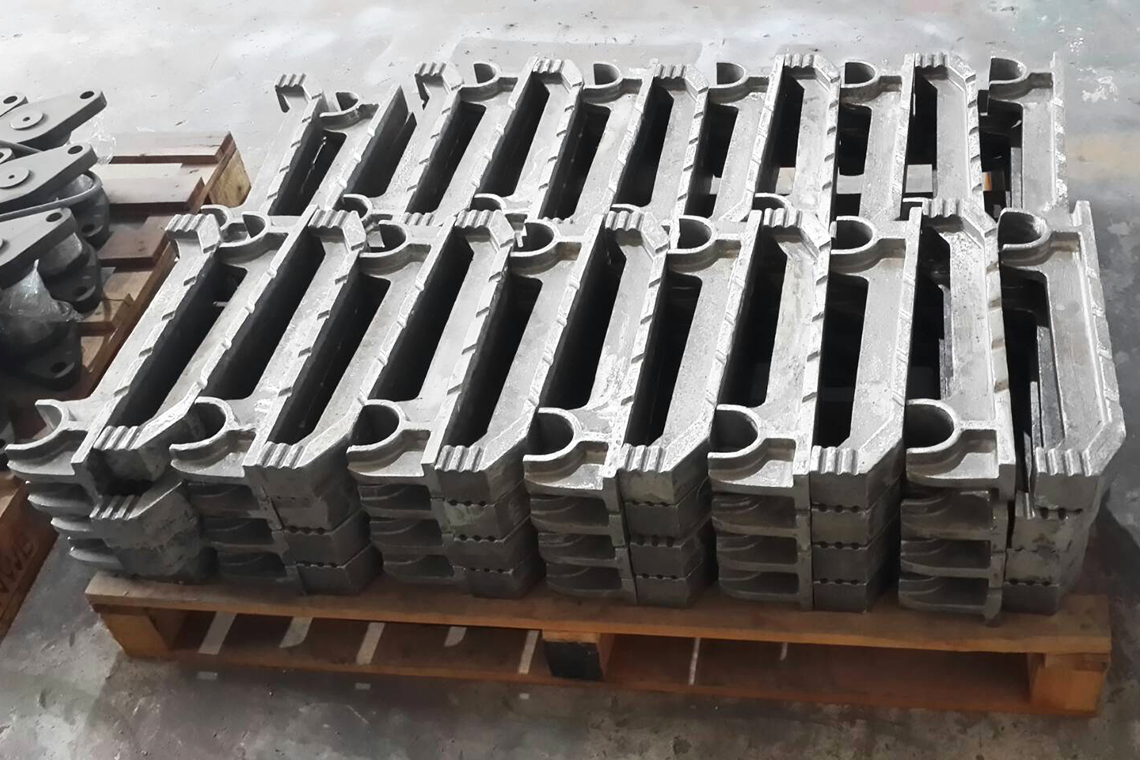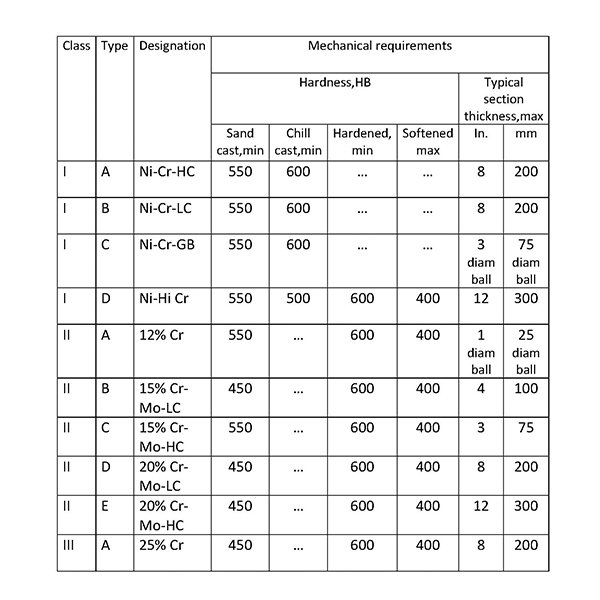High Chromium White Cast Iron | SAHAVIT FOUNDRY
5542 Views |

The high chromium white irons have excellent abrasion resistance and are used effectively in slurry pumps , brick molds , coal grinding mills , shot blast equipment and components for quarrying , hard-rock mining , and milling. In some applications they must also be able to withstand heavy impact loading. Theses alloyed white irons are recognized as providing the best combination of toughness and abrasion resistance attainable among the white cast iron.
In the high chromium cast iron, as with most abrasion resistant materials, there is a trade-off between wear resistance and tougness. By varting composition and heat treatment, these properties can be adjusted to meet the needs of most abrasive applicaitons.
As a class of alloyed irons, the high chromium cast irons are distinguished by the hard, relatively discontinuous M7C3 eutectic carbides present in the microstructure, as opposed to the softer, more continuous M3C eutectic carbides present in the alloyed irons containing less chromium. These alloys are usually produced as hypoeutectic composition.
Classes of High chromium white cast iron
Specification ASTM A 532 covers the compositions and hardnesses of two general classes of high chromium white cast irons. The high chromium white cast iron (Class II of ASTM A 532) contain 11 to 23% Cr and up to 3.5% Mo and can be supplied either as-cast with an austenitic or austenitic-martensitic matrix, or heat treated with a martensitic matrix microstructure for maximum abrasion resistance and toughness. They are usually considered the hardest of all grades of white cast irons. Compared to the lower-alloy nickel-chromium white irons, the eutectic carbides are harder and can be heat treated to achieve castings of higher hardness. Molybdenum, as well as nickel and copper when needed, is added to prevent pearlite and ensure maximum hardness.
The high chromium white cast iron (Class III of ASTM A 532) is general-purpose irons, also called 25% Cr and 28% Cr irons, contain 23 to 28% Cr with up to 1.5% Mo. To prevent pearlite and attain maximum hardness, molybdenum is added in all but the lightest-cast section. Alloying with nickel and copper up to 1% is also practiced. Although the maximum attainable hardness is not as high as in the class II chromium-molybdenum white irons, these alloys are selected when resistance to corrosion is also desired.
Chemical composition of Abrasion resistant casting irons per ASTM A 532

Mechanical requirement of Abrasion resistant casting irons per ASTM A 532
